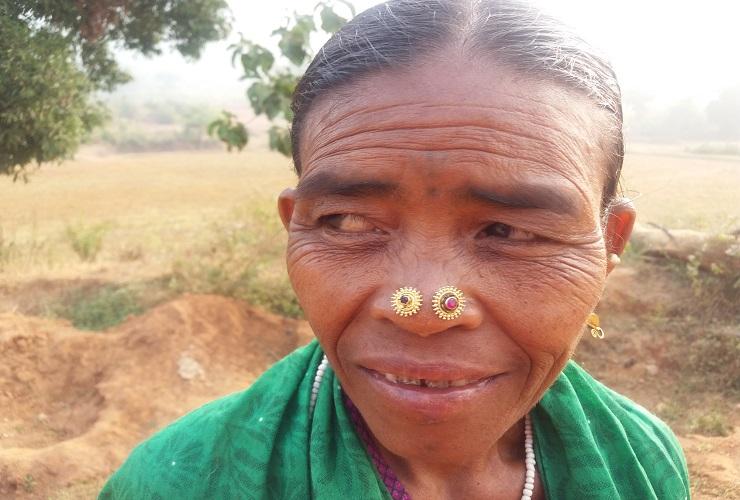ASIACALLING
Indian Indigenous groups fight for forests and food
"In the Indian state of Odisha, the Khond, a large Indigenous community, are losing their forest and their food sources. Cash crops -plantations of teak and eucalyptus- are encroaching on their land."
Kalpana Pradhan

In the Indian state of Odisha, the Khond, a large Indigenous community, are losing their forest and their food sources. Cash crops -plantations of teak and eucalyptus- are encroaching on land that has long been a rich source of diverse and nutritious food.
But Khond families are raising their voices, and fighting against threats to their lifeline.
From Roygada, in Odisha, Kalpana Pradhan has this story.
Lush emerald green hills stretch out into the distance in all directions, as we drive along undulating roads towards Khalpadar tribal village.
This is the southern part of Odisha, formerly known as Orissa state. These hills are home to the Dongria Khond tribe, whose traditional practices have helped nurture the area’s dense forest and unusually rich wildlife.
We reach the village of Khalpadar nestled at the base of a hill. A group of Khond women are sitting together, talking and singing.
Shukumoti Shikoka tells me that the forest is their lifeline, and Khond people are very protective of it.
“We protect the forest not just because it gives us food, but also because many living things, animals, ants, monkeys, everyone lives there and they are all part of our lives,” she said.
Khond people regularly gather fruit and roots from the forest. They also grow vegetables, millets, legumes and corn in the area.
After each harvest, they store and exchange seeds to ensure local adaptability and availability. They grow a wide variety of produce, which maintains soil fertility
“When we grow something it is not just for us, but it’s for everyone in forest who we consider as our family.” Shikoka continued, “as long as the forest is there, we will continue to be prosperous.”
Odisha is one of the poorest states in Eastern India, and here Khond make up a quarter of the population. But Shukumoti tells me Khond people have traditionally been very prosperous.
“We as a community, as whole Adivasi [tribal group] are the most prosperous community in the world, that’s what we believe,” Shikoka stated.
As I travel between villages in the area of Muniguda, I see a large tract of cleared land.
Since 2013, Odisha State Forest Department has been converting this diverse ecosystem into a single-species cash crop plantation zone.
Forest is being cleared, and replaced with crops of eucalyptus, teak, rubber and coffee. The Odisha State government plans to continue cash crop plantations until 2022. The initiative is supposed to create 45 000 jobs over a ten year period.
But villager Landi Shikokua doesn’t want to be pushed from a life of self-sufficiency to working cash crops.
“Forest department, they come here and they want to plant eucalyptus and teak trees. We asked them, what value does it add to our lives” Shikokua asked. “It really adds no value for us, or for the lives in the forest, so we are resisting them.”
Anticipating an acute shortage of food in the future, the Khond women are taking the matter up with government officials.
But they’re also taking matters directly into their own hands. In an act of resistance, villagers have cut down the teak and eucalyptus, and replaced them once again with traditional crops.
“As forest dwellers, the fruit bearing trees like dates, jackfruit, mango, and berry are valuable for us and for other animals in the forest,” Shikokua explained.
“We are very much against it. We are going to fight it tooth and nail.”
Several indigenous people have been arrested in protests against cash crop plantations. And last year, two people from the Nabarangpur tribal group were killed as they fought for their land.
The Khond people have been told that they will be able to access subsidized rice, wheat, and pulses under the government food security program. But it won’t match the variety and nutrition of their traditional diet.
Salome Nadimidodde is a nutrition researcher with twenty years experience working on the food culture of India’s indigenous tribes.
“They gather a whole lot of colourful greens, mushrooms, tubers, fruits and number of animals including insects and worms. They exactly know how and when is to be harvest and what is to be left for regeneration.”
Nadimidodde says she has seen a devastating decline in the Khond’s diet. “The health and the nutritious status of the community is very pathetic state.”
Adivasi, or tribal people, in Odisha are already feeling the impacts of ecological destruction.
Around 46% tribal children under the age of five are underweight and have stunted growth, while 17% are severely underweight, according to a 2014 study by UNICEF and the Ministry of Women and Child Development.
Shikoka Siromoti, is a mother of three kids, and she says she can see how poor nutrition is taking its toll.
“Our people could climb from one mountain to another, they could walk miles without getting tired, that’s not the kids today,” she said in exasperation.
But the Khond are not giving up. As I leave the area, I hear villagers singing a traditional song that promises they will dedicate their lives to protect the forest.
- Khond
- Indigenous people India
- Odisha state
- Food sovereignty
- Kalpana Pradhan
- Cash crops
- Nutrition India
Komentar (0)
KBR percaya pembaca situs ini adalah orang-orang yang cerdas dan terpelajar. Karena itu mari kita gunakan kata-kata yang santun di dalam kolom komentar ini. Kalimat yang sopan, menjauhi prasangka SARA (suku, agama, ras dan antargolongan), pasti akan lebih didengar. Yuk, kita praktikkan!